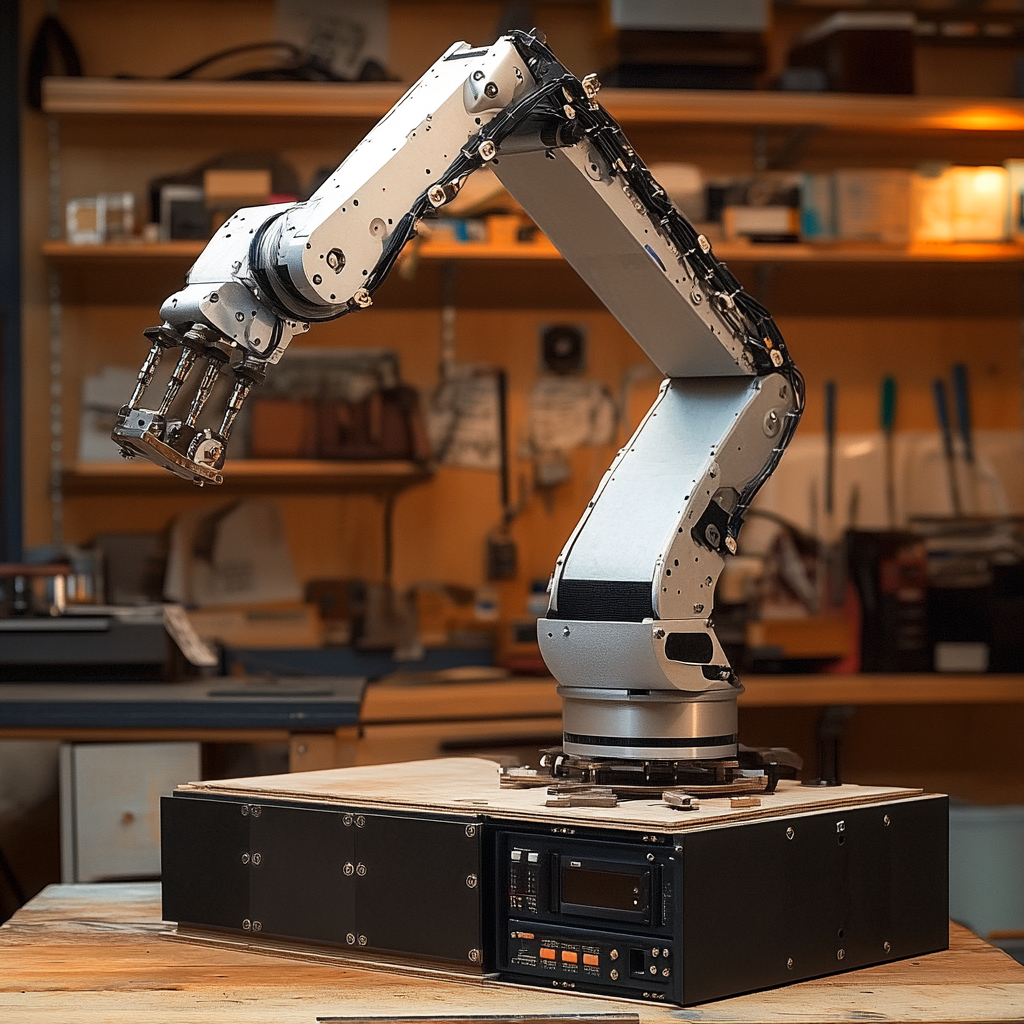Introduction
Robotic arms have revolutionized manufacturing and industrial processes by automating tasks that are repetitive, dangerous, or require high precision. They are essential in industries ranging from automotive assembly lines to delicate surgical procedures. At the core of a robotic arm’s functionality are servo motors, which provide the precise control necessary for complex movements. This article explores the mechanics of robotic arms, the role of servo motors, and how these technologies are shaping the future of automation.
The Mechanics of Robotic Arms
A robotic arm is designed to mimic the movements of a human arm, complete with joints, elbows, and an end effector that acts like a hand. These arms are commonly used for tasks such as welding, drilling, painting, and material handling. The structure of a robotic arm can be broken down into five main components: controllers, arms, end effectors, drives, and sensors.
- Controllers: Acting as the brain of the robotic arm, controllers store and execute the programmed instructions that direct the arm’s movements. They can range from simple joysticks to complex processors capable of executing autonomous tasks.
- Arms: The arm consists of segments connected by joints that provide the flexibility to move in multiple directions. These joints—similar to the shoulder, elbow, and wrist—enable the arm to rotate, bend, and reach different positions.
- End Effector: This component performs the gripping, lifting, or manipulating actions at the end of the arm. End effectors can be designed as claws, grippers, or specialized tools, depending on the task.
- Drives: Drives are the motors located between the arm’s joints, enabling movement by converting electrical signals from the controller into mechanical action. They allow the arm to move at varying speeds and directions.
- Sensors: Sensors play a critical role in detecting the arm’s environment, allowing it to avoid obstacles and operate safely alongside humans and other machines. Sensors continuously feed information back to the controller, enabling real-time adjustments.
Servo Motors: The Backbone of Robotic Arms
Servo motors are essential in providing precise control over the robotic arm’s movements. A servo motor is a specialized electromechanical device that converts electrical signals into controlled motion. It consists of an electric motor, a control circuit, and a feedback system, typically using potentiometers or encoders.
How Servo Motors Work: The control system sends a Pulse Width Modulation (PWM) signal to the servo motor, dictating its position, speed, and direction. The feedback system continuously monitors the motor’s position and adjusts as needed to maintain the desired motion. This closed-loop control system ensures smooth, accurate, and reliable operation.
Types of Servo Motors:
- DC Servo Motors: Known for their simplicity and cost-effectiveness, DC servo motors are widely used in applications requiring high torque and speed control.
- AC Servo Motors: These motors offer high efficiency and power density, making them ideal for industrial tasks requiring rapid positioning.
- Brushless DC Servo Motors: Combining the benefits of DC and AC motors, these are highly efficient and require less maintenance, suitable for precise applications like aerospace and medical devices.
Benefits of Servo Motors in Robotics
- High Precision: Servo motors offer exceptional accuracy, making them indispensable for tasks that require meticulous positioning, such as assembly and material handling.
- Rapid Response: Servo motors quickly respond to input signals, allowing for real-time adjustments. This is crucial in fast-paced environments like automotive manufacturing.
- Energy Efficiency: Servo motors consume power only when in motion, maintaining positions with minimal energy usage, making them cost-effective and environmentally friendly.
- Programmability and Flexibility: Robotic arms equipped with servo motors can be easily reprogrammed for different tasks, enhancing their versatility across various applications.
- High Torque at Low Speeds: Servo motors provide substantial torque even at low speeds, which is vital for heavy-duty applications such as welding or lifting.
Applications of Servo Motors in Robotic Arms
Servo motors are found in numerous applications across industries:
- Industrial Automation: Used in conveyor systems, packaging machinery, and assembly lines, servo motors enable precise control of production processes.
- Robotics: In robotics, servo motors control the movement of arms, joints, and grippers, facilitating tasks like painting, welding, and assembly.
- CNC Machining: CNC machines rely on servo motors to position cutting tools with high accuracy, enhancing the precision of manufactured parts.
- Medical Devices: From robotic surgical systems to automated drug delivery, servo motors provide the precision required in the medical field.
Conclusion
The integration of servo motors in robotic arms has significantly advanced the capabilities of automation technologies. Their precision, reliability, and adaptability make them indispensable in modern manufacturing and beyond. As the technology continues to evolve, we can expect servo motors to play an even more crucial role in the automation revolution, driving efficiency and innovation in industries worldwide.






